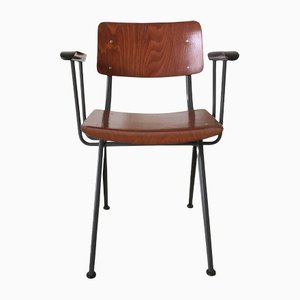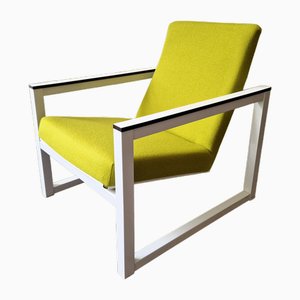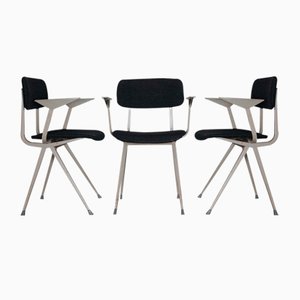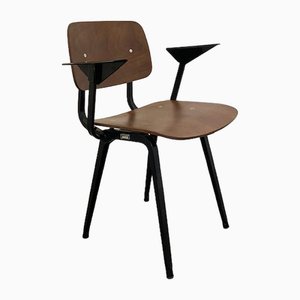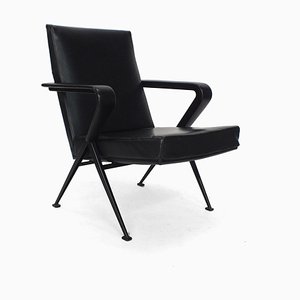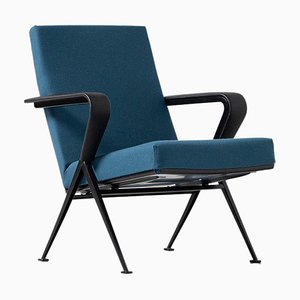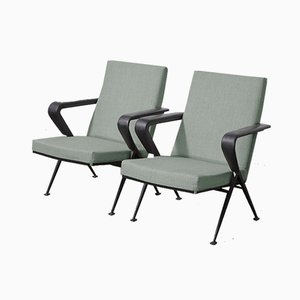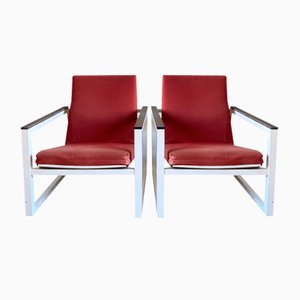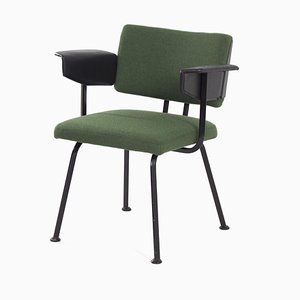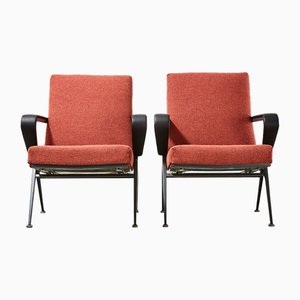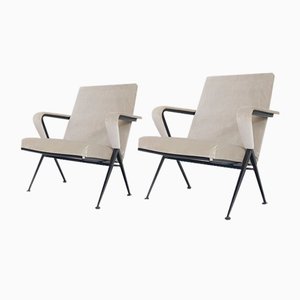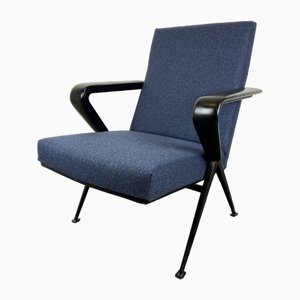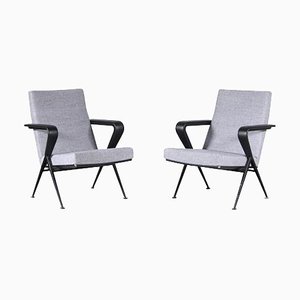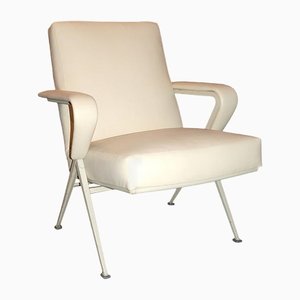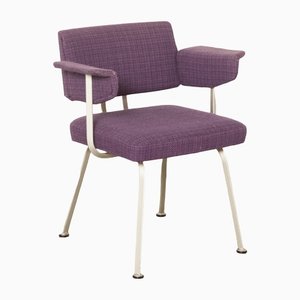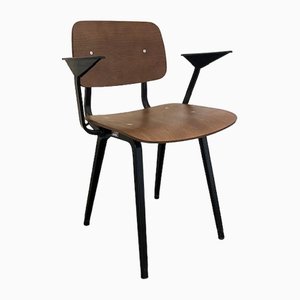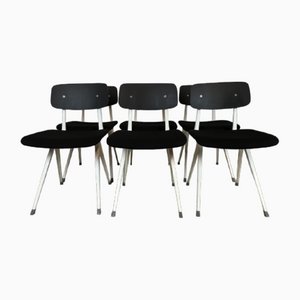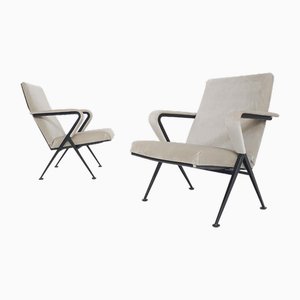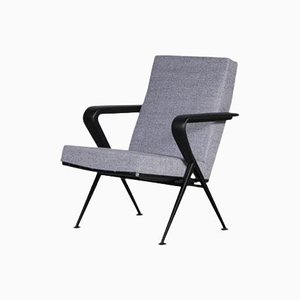
The Life of Friso Kramer
Dutch designer Friso Kramer, born in 1922, belongs to the Netherlands' first generation of industrial designers and played a significant role in the development of the nation’s modernist aesthetic style from the 1940s until today. Kramer studied interior architecture at the Institute for Education in Arts and Crafts in Amsterdam, and went on to work at notable architecture agencies Bureau J.P. Kloos and the Frans Paulussen Bureau before being employed as a designer for Ahrend de Cirkel.
The Iconic Designs and Accomplishments of Friso Kramer
Friso Kramer conceived his most revered design, the Revolt Chair, in 1953 while employed as a designer at Ahrend de Cirkel. The chair’s steel plated frame is an icon of Dutch post-war design: its form undoubtedly inspired by the molded plywood chair designs of Charles and Ray Eames. One of the first chairs to be industrially produced, the top-selling Revolt Chair became a staple in classrooms, offices and homes in the Netherlands and worldwide. Instead of utilizing steel tubing, which was common for the day, Kramer used steel plated plastic for the chair frame, creating a low cost and essentially indestructible product. The Revolt is still available today, in a larger, redesigned form commissioned from Kramer by Ahrend around 1990. Kramer’s insistence on using high-quality materials and construction influenced countless designers.
In 1963 Kramer co-founded the Total Design group. The group consisted of professionals from other industries such as graphic design, spatial design and organization and finance, with the aim to "develop and execute ideas on design in all fields, in order, where possible, to achieve a unity of ideas, or 'total design' in these fields". Until this point, almost all major design commissions from Dutch clients were going offshore as there were no major agencies in the Netherlands at this time. Total Design aimed to fill this gap and took up a number of commissions and projects before Kramer left in 1967. The mixed skillset of the group allowed for clients from industry, trade, transport, and the government and cultural sectors such as Randstad, the Amsterdam Stedelijk Museum, Schiphol Airport, De Bijenkorf, Steenkolen Handelsvereeniging, and the Stichting Arts and Business Foundation.
Friso Kramer in Later Life & Today
Kramer returned to the Ahrend Group in 1971 where he served as art director until 1983. In 1972 Kramer designed the popular and distinctive MEHES office furniture series for Ahrend/Oda Company. The MEHES name was an acronym for the needs that he had defined as essential within an office: mobility, efficiency, humanization, environment and standardization. The minimalist in the series are constructed of thin, L-shaped legs, which support a worktop that appears to float, employing a minimum number of parts for maximum effect. In 1979 Friso Kramer received the title 'Royal Designer for Industry' from the RSA (Royal Society for the Encouragement of Arts, Manufactures and Commerce) in London.


